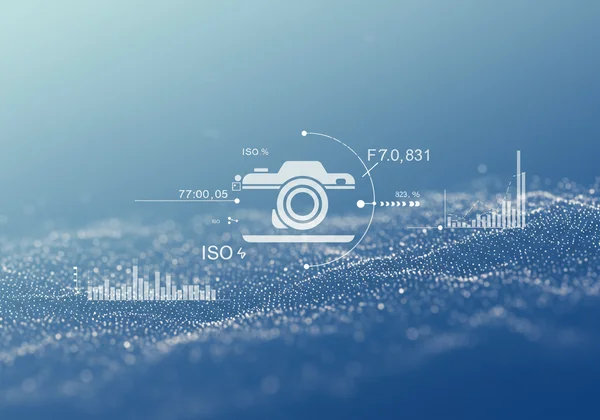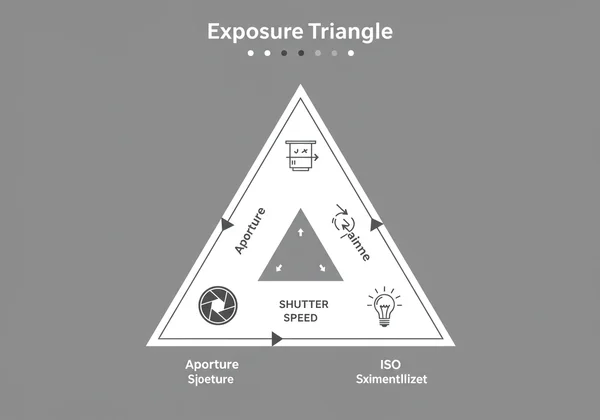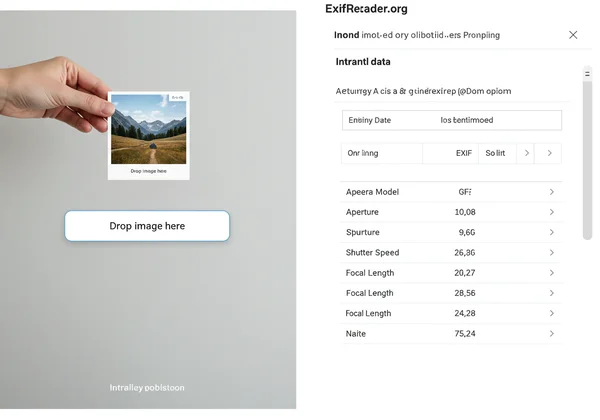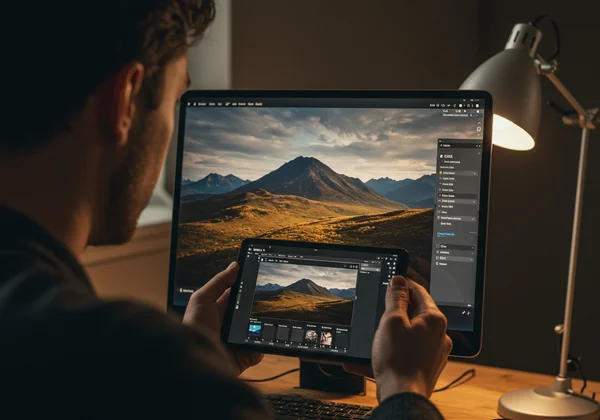Exif Reader: Analyze Photography EXIF Data for Better Shots
Ever wonder how photographers achieve those perfect shots? The secret often lies in EXIF data, a hidden digital blueprint embedded in every photo. For photographers aiming to sharpen their skills, mastering photography EXIF analysis is a game-changer. This isn't just data; it's the exact 'how-to' guide to your images, revealing everything from camera settings to location. It's the most powerful learning tool you might be overlooking.
This guide will show you how to decode this information to refine your technique, replicate stunning effects, and learn from the pros. Forget guesswork—it's time to make data-driven decisions that lead to better photos. Ready to unlock the secrets in your images? You can view exif data instantly and securely right from your browser.

Decoding Camera Settings in EXIF Data
At its core, EXIF (Exchangeable Image File Format) data is a record of all the settings your camera used at the moment you pressed the shutter. Instead of trying to remember what worked, you can see the exact recipe for success (or failure). This is crucial for consistent improvement and represents the first step to truly understanding your gear.
Aperture, Shutter Speed, & ISO: The Exposure Triangle Explained
The foundation of any good photograph is exposure, controlled by the "exposure triangle": aperture, shutter speed, and ISO. EXIF data lays these three values bare for every single photo.
-
Aperture (f-stop): This value (e.g., f/1.8, f/8) tells you how wide the lens opening was. A low f-stop number (f/1.8) means a wide aperture, creating a shallow depth of field with a blurry background (bokeh). A high f-stop number (f/11) means a narrow aperture, keeping more of the scene in sharp focus. By analyzing the aperture in your favorite portraits, you can learn how to perfectly isolate your subjects.
-
Shutter Speed: This indicates how long the camera's sensor was exposed to light (e.g., 1/1000s, 1/30s). A fast shutter speed like 1/1000s freezes fast action, while a slow speed can create intentional motion blur, perfect for capturing waterfalls or light trails. If your photos are blurry, checking the shutter speed in the EXIF data is the first diagnostic step.
-
ISO: This setting determines the sensor's sensitivity to light. A low ISO (e.g., 100) produces a clean, high-quality image in bright conditions. A high ISO (e.g., 3200) is necessary for low-light situations but can introduce digital noise or "grain." Examining the ISO helps you understand the trade-off between brightness and image quality in your shots. You can check exif data on your own photos to see these settings.

Focal Length, White Balance, & Metering Mode: Advanced Insights
Beyond the exposure triangle, EXIF data provides deeper technical insights that separate good photographers from great ones. These details help you understand the nuances of composition, color, and lighting.
- Focal Length: Measured in millimeters (e.g., 24mm, 200mm), this tells you the lens's zoom level. A wide focal length (like 24mm) is great for landscapes, while a long focal length (like 200mm) is ideal for wildlife or sports. Analyzing focal length helps you see how lens choice impacts perspective and composition.
- White Balance: This setting ensures that colors appear natural by compensating for the color temperature of the light source. EXIF data will show if you used an automatic setting or a specific preset (like "Cloudy" or "Tungsten"). If your photos have an unnatural color cast, the white balance data can tell you why.
- Metering Mode: This reveals how your camera measured the light in the scene to determine the correct exposure. Common modes include Matrix/Evaluative, Center-Weighted, and Spot. Understanding which mode was used can explain why certain parts of your image might be perfectly exposed while others are too bright or dark.
Your Guide to Photography EXIF Analysis
Knowing what the data means is one thing; accessing and interpreting it is another. You need a fast, reliable, and secure way to decode photo data. Many software solutions are clunky, require installation, or, worse, force you to upload your private images to a server. This is where a modern, browser-based approach shines.
How to View EXIF Data with ExifReader.org (A Step-by-Step Walkthrough)
Using an online tool like ExifReader.org is the safest and easiest way to perform a photography EXIF analysis. This free exif reader provides instant results, but its most significant advantage is privacy: the entire process happens inside your browser. Your photos are never uploaded to a server, eliminating any risk of data theft or privacy breaches.
Here’s how simple it is:
-
Open Your Browser: Navigate to the ExifReader.org homepage.
-
Select Your Image: Simply drag and drop any image file from your computer directly onto the page. You can also click the box to browse and select a file. It supports a wide range of formats, including JPEG, PNG, HEIC, and WebP.
-
Instantly View the Data: The moment you drop the image, all its metadata is displayed in a clean, organized report. There’s no waiting, no upload progress bar—just instant results.

This process gives you immediate access to all the camera settings, timestamps, and even GPS coordinates if they are present.
Interpreting the Data: What Each Field Tells You About Your Shot
Once the data is displayed, you can begin your analysis. The tool presents information in clear sections. You'll see the camera make and model, which is great for understanding the gear used. The core camera settings—aperture, shutter speed, ISO, and focal length—are typically grouped together.
Look at a photo you love. What was the aperture? Now look at one you dislike. Was the shutter speed too slow for a handheld shot? By comparing the data between your successes and failures, you create a direct feedback loop for learning. This method transforms every photo session into a valuable lesson. It's the most efficient way to read exif data and grow your skills.
Improve Your Photography with EXIF Insights
The ultimate goal of analyzing EXIF data is to take better pictures. By moving beyond theory and into practical application, you can accelerate your learning curve dramatically. This is where you turn raw data into artistic skill.
Learning from Your Own Photos: Identify Strengths & Weaknesses
Your photo library is a personalized textbook waiting to be read. Create two folders: "Favorites" and "Rejects." Use an online exif reader to analyze photos from each.
Do your "Favorites" consistently share a particular aperture range or metering mode? Are your "Rejects" often plagued by camera shake due to slow shutter speeds? This self-assessment is incredibly powerful. It reveals your habits—both good and bad—and gives you a clear roadmap of what to practice next.
Deconstructing Masterpieces: How Pros Get Their Shots
Want to know how your favorite photographer captured that breathtaking landscape or striking portrait? Find an original image file of their work online (many photographers share them on platforms like Flickr) and run it through an image exif viewer.
By deconstructing their settings, you can understand the technical decisions behind their artistic vision. You'll see the exact focal length they chose for composition, the aperture they used for that creamy bokeh, and the ISO they pushed to shoot in near darkness. It’s like getting a private lesson from the best in the world.
Replicating Desired Effects & Preventing Common Mistakes
EXIF data is your recipe book for creative effects. Want to capture silky smooth water? Analyze photos of waterfalls and you'll find they consistently use slow shutter speeds and low ISOs. Want to take tack-sharp photos of birds in flight? You'll discover the pros use incredibly fast shutter speeds and continuous focus modes.
Conversely, it helps you troubleshoot common problems. If your indoor photos are always yellow, checking the white balance setting in the EXIF might reveal you forgot to switch from an outdoor preset. If your action shots are blurry, the data will prove your shutter speed was too slow. Start your analysis with our free exif viewer.

Unlock Your Full Photographic Potential with EXIF Analysis
Ultimately, EXIF data isn't just technical jargon—it's your direct link between camera settings and stunning photos. Integrate photography EXIF analysis into your routine, and you'll trade guesswork for genuine insight, accelerating your learning and sharpening your control over every shot.
The best part is that the tools to do this are more accessible and secure than ever. You don't need to download bulky software or risk your privacy. With an exif reader that works directly in your browser, you can unveil the secrets in any photo in seconds.
Ready to take your photography to the next level? Grab one of your favorite photos and start analyzing now.
Frequently Asked Questions About Photography EXIF Data
What is EXIF data and why is it important for photographers? Simply put, EXIF data is your camera's automatic record of settings stored within the image file. It includes crucial information like shutter speed, aperture, ISO, focal length, camera model, and sometimes GPS location. For photographers, it’s an invaluable tool for learning, as it provides the exact "recipe" used to create a photo, enabling you to analyze your work, learn from others, and improve your technique.
How can I view EXIF data from my photos on different devices? While your computer might have a basic built-in viewer (like checking "Properties" on a file), the easiest and most comprehensive method is using a dedicated tool. An online, browser-based solution like ExifReader.org is ideal because it works on any device with a web browser (Mac, Windows, iPhone, Android) without requiring any installation. Plus, it ensures your privacy by processing the image locally.
Does EXIF data reveal sensitive information like location? Yes, and this is a major privacy concern. If your camera or smartphone has GPS enabled, the precise geographic coordinates of where the photo was taken can be embedded in the EXIF data. Using an exif data viewer allows you to check for this location data before you share images online.
Can analyzing EXIF data truly make me a better photographer? Without a doubt. Analyzing EXIF data creates a powerful feedback loop. It helps you understand why some photos work and others don't by connecting the final image to the specific settings you used. It allows you to identify recurring mistakes (e.g., using a shutter speed that's too slow) and learn the exact techniques needed to replicate professional-quality shots.
What's the best free online EXIF reader for photographers? The best free online exif reader for photographers is one that is fast, comprehensive, and, most importantly, private. ExifReader.org is a top choice because it meets all these criteria. It processes all data directly in your browser, meaning your photos are never uploaded to a server, offering complete security and peace of mind. Its user-friendly interface makes it easy for photographers of all skill levels to quickly get the insights they need.